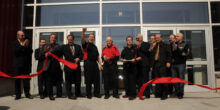Consumer Reports reveals first-ever motorcycle reliability survey
News release
Harley-Davidson may be an iconic American maker of motorcycles but its bikes have been repair-prone, according to Consumer Reports’ first-ever motorcycle reliability survey, conducted by the Consumer Reports National Research Center.
About one in four owners of Harley-Davidson motorcycles reported experiencing a major problem in the previous four years. The full report is available at ConsumerReports.org and in the May issue of Consumer Reports, which hits newsstands on March 28.
BMW motorcycles were even less reliable than Harley-Davidsons with about one in three owners reporting problems in the previous four years. Only about one in ten Yamaha owners experienced issues during that time, followed closely Kawasaki and Honda.
“Reliability is one of many factors consumers might consider when purchasing a motorcycle. However, other factors like sculpted lines and rumbling engines also strike the right note among motorcyclists,” said Rik Paul, Auto Editor, Consumer Reports.
Despite the higher number of problems, Harley and BMW owners were among the most satisfied with their bikes. When asked whether, considering everything, they would buy their bike again if they had to do it over, 75 percent of Harley owners said definitely yes, closely followed by 74 percent of BMW owners and 72 percent of Honda owners. By contrast, only 63 and 60 percent of Yamaha and Kawasaki owners, respectively, were as emphatic in this subjective measure.
Among the bikes that needed repairs, survey respondents reporting having the most trouble with accessories, such as lights, instruments, switches, and radios (21 percent), brakes (20 percent), the electrical system (16 percent), and the fuel system (15 percent). Fortunately, most repairs were fairly inexpensive. Three quarters cost less than $200 out-of-pocket.
A welcome trend in motorcycle technology is the growing availability of antilock brakes (ABS). Bikes equipped with ABS are 37 percent less likely to be involved in a fatal crash, according to the Insurance Institute for Highway Safety. This critical feature is now standard on many high-end models and adds only a few hundred dollars to the price of more basic bikes — and investment Consumer Reports believes to be worthwhile and potentially lifesaving.









No Suzuki?
What about repairs per mile? Some bikes tend to ridden a lot; others not so much. I wouldn’t be surprised to see 50,000 miles on a BMW after four years.
Good point Michael. I’m not a BMW guy, but I know quite a few people who do ride them, and they tend to put way more miles on their bikes than the typical Harley owner, or any of the Japanese cruiser bikes either for that matter.
Suzuki’s manufacturing expertise and quality is far below the other Japanese manufacturers. Harley pawns off 40 year old technology as new in the name of heritage. BMW riders are smitten with the name. I have owned Hondas and kawasakis for over 35 years and they are a class apart. Yamahas are awesome too. BMW riders do rack up a lot of miles, but so do Japanese bike riders. And some of the high stressed Japanese bikes perform beyond what the stress levels on puny Harley’s and BMW may be subjected to. Go Honda, Yamaha and Kawasaki.
After having two bikes with ABS, I will never own a bike without it. One word of caution on the 37% reduction in fatalities statistic however, is that statistic does not account for the demographics of the rider. A person who is safety conscious enough to pay $1,000 for ABS is different from the crotch rocket stunter who will spend that $1,000 on a chip set and pipes. One of the primary reason insurance companies give discounts for safety related items is to capture safety conscious drivers.
Just curious as to what brand was the most reliable. I can’t imagine why that isn’t mentioned here. Seems like when some brands sales click up a couple of points in a quarter it’s a major headline . Anyone wanna guess?